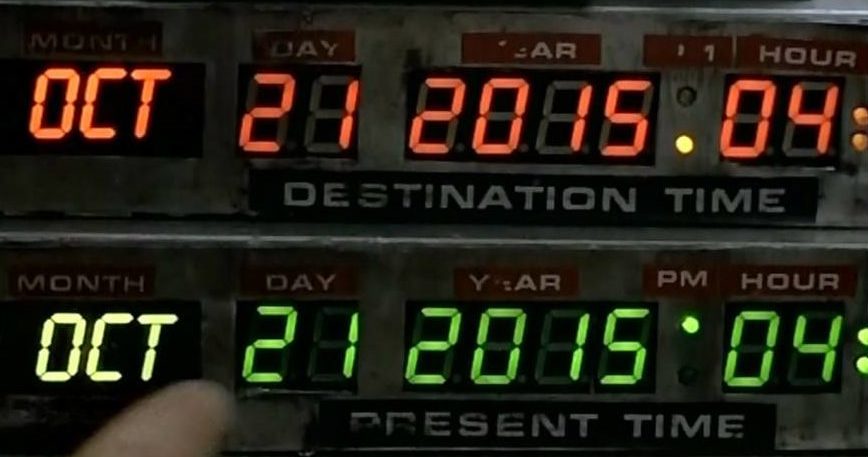Back to the future: The renaissance of contextual advertising
With so much attention focussed on audience-based targeting, advertisers have all-but forgotten a form of targeting which once ruled the roost, writes GumGum’s Jon Stubley.
Before the days of internet, there were two main ways to target consumers with advertising: demographic or contextual. Marketers used research to understand who read a particular magazine or newspaper or watched a TV programme and then ads were duly placed in the right context. This meant holiday companies advertised in the travel section, fashion in the fashion pages and on it went. Simple.
Post-internet however, things began to change quickly with the ability to track which sites people had visited giving rise to behavioural advertising. We’ve all got our own stories about being virtually chased during our web sessions with ads for a pair of shoes we once looked at while we browsed a whole range of unrelated sites (and in some cases many months after your initial visit to said shoe site).
There’s no doubt that for a while, this seemed like a win-win for everyone. Advertisers in particular gained access to cheap inventory and if they threw enough of it around, some stuck and provided metrics to prove that it worked for consumers. Then programmatic advertising arrived and delivered another boost for behavioural advertising with online ads increasingly traded on the attributes of visitors to a page versus the content of the page they were visiting.
So perhaps we got what we deserved in the shape of brand safety and trust issues and a level of customer annoyance. Even before you layer the impact of GDPR on audience-based targeting, the focus on finding audiences at the lowest price has played a large part in the well documented industry woes and reputational damage across the whole ecosystem of the last few years.
It’s the perfect setting for a phoenix rising in the form of a renewed interest in contextual advertising.
Mixing it up
Whilst contextual advertising didn’t totally fade out of the marketers’ arsenal over the last ten years, it was certainly relegated to a minor role when it came to targeting. However, the renewed focus on quality outcomes means that many brands are shaking up their approach and in turn increasing their investment in contextual advertising.
Indeed, recent research by YouGov in the US and UK for GumGum of senior executives found that 59% of UK respondents said they’d kept spending on contextual constant last year, while 18% said they’d increased it. Looking forward, 26% said they planned to do more contextually targeted advertising next year. The figures were similar in the US with 61% maintain spending on contextual last year, and 24% had increasing it, while 31% said they planned to spend more next year. In both markets the increased spend runs slightly ahead of planned budget increases for targeted advertising in general.
Key drivers
The figures seemed to point to a shift back to contextual advertising, but to make sure we asked respondents if they thought approaches to targeting were changing and, if so, why. GDPR was cited as a driver of changes to targeting – although it’s no surprise that the UK respondents believed that GDPR was having a greater impact than their US counterparts. The reality is that the true impact of GDPR is yet to be made clear but at the time the survey was carried out (June 2018) audiences in the UK were certainly impacted. Time will tell as to the ripple effect GDPR and the focus on brand safety will have over the next few years. However, whilst personalised advertising will still play a major role, it’s likely that brands will be more focused on balancing reach with quality.
However, the really interesting reason given by roughly two-thirds of marketers in both countries for their shift back to contextual advertising pointed to the change being driven by technology.
That shouldn’t be a surprise because technology has now evolved to the point where advertisers no longer have to rely on tagging to understand the content of the page. Machine learning can now accurately categorise a page according to tone of voice, sentiment, reading age and more and that means brands can create deeper connections between their ads and the content on the page. Critically, it means that context can also be overlaid into programmatic buying methods.
What’s next?
Advances in sentiment analysis has already opened up inventory across news sites that brands were previously wary of due to a fear of being associated with bad news. Image based contextual targeting is now a reality – with the research showing that 58% of UK respondents and 66% of those in the US are already using contextual targeting based on images.
However, there are two emerging capabilities that are set to turbo-charge contextual targeting. Firstly, the ability to analyse video content in seconds will provide significant opportunity for brands to align their advertising within the explosion of video content we are seeing across all platforms (fast food ads around content that features fast food etc.). The other is the ability to link contextual targeting to predictive analytics and attribution models. At the moment AI is driving conversion targeting but if it’s able to move to the top of the funnel then brand strategy and consideration will all be able to be linked to contextual strategy – and things will really start to get interesting for marketers.
From my own conversations locally, the reemergence of contextual advertising seems to be linked to a wider industry push on getting back to the basics of advertising. Data-driven marketing has undoubtedly been a positive, but it seems that locally marketers are realizing the relentless pursuit of personalised marketing and the holy grail of one to one communication has sometimes made us forget the basics of marketing – presenting a great creative in the right environment.
Sometimes it pays to go back to the start.
Jon Stubley is MD ANZ at GumGum.




